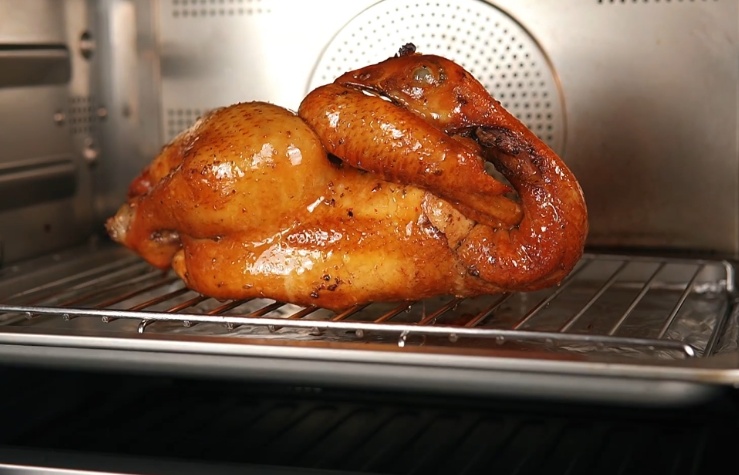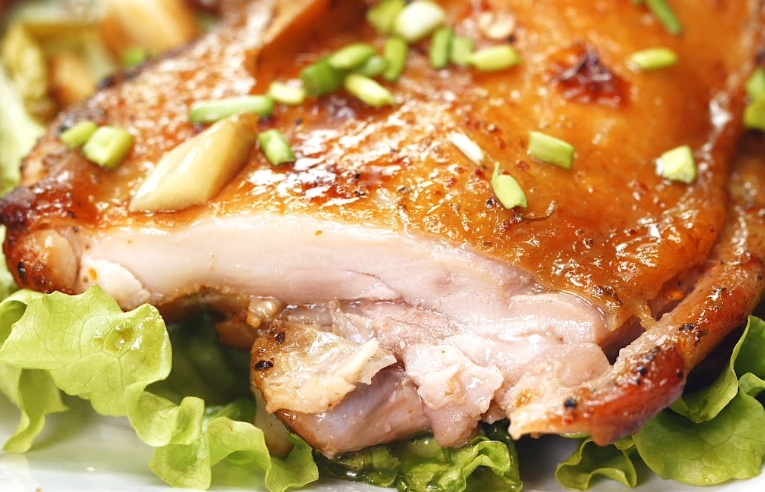Cooking Technique Focus: How Long to Cook Turkey Wings in Oven at 400?
 Have You Ever Considered the Amazing Experience of Baking Turkey Wings at 400 Degrees?
Have You Ever Considered the Amazing Experience of Baking Turkey Wings at 400 Degrees?
Baking turkey wings at 400 degrees can be a bit of a puzzle, like cracking a mysterious code. Don’t worry! Today, I’ll unveil this mystery and show you how to perfectly manage the time to achieve crispy, delicious turkey wings that will elevate your dining table with a stunning dish.
How long do you need to bake different sized turkey wings?
Small Turkey Wings: Approximately 30-40 minutes each
Medium Turkey Wings: Approximately 40-50 minutes each
Large Turkey Wings: Approximately 50-60 minutes each
To ensure the turkey wings are fully cooked, use a thermometer to check the thickest part of the wing; it should reach an internal temperature of 165°F (about 74°C). This way, you'll get turkey wings that are crispy on the outside and juicy on the inside—absolutely delicious!
Should you wrap turkey wings in foil?
Whether or not to use foil when baking turkey wings at 400 degrees depends on your cooking needs and preferences.
Pros and Cons of Using Foil:
Pros: Foil conducts heat well, allowing the turkey wings to cook more evenly, almost like giving them a little “boost.” Additionally, foil can catch drippings, preventing them from making a mess in your oven.
Cons: However, if you place the turkey wings directly on the foil, the contact points may burn, which can be a hassle.
If you want the bottoms of the turkey wings to cook evenly, consider placing a layer of sliced onions or parchment paper on the baking sheet before adding the wings. In fact, using parchment paper instead of aluminum foil might be a better option, as it doesn’t come into direct contact with the food, reducing any potential health concerns related to aluminum exposure.

Why are my turkey wings tough?
Incorrect Cooking Time:
One common reason turkey wings become tough is overcooking. Prolonged high-temperature baking can cause the wings to lose a lot of moisture, resulting in dry, hard meat.
Improvement Suggestions:
Set the cooking time based on the size and thickness of the turkey wings to avoid overcooking.
Regularly check the doneness of the wings during cooking to ensure they’re just right.
Cooking Temperature Too High:
Excessively high cooking temperatures can also accelerate moisture loss, leading to tough meat.
Improvement Suggestions:
Lower the cooking temperature to allow the turkey wings to cook slowly in a gentler environment.
Preheat the oven to the appropriate temperature before placing the wings inside to prevent rapid moisture loss from sudden high heat.
Insufficient Marinating:
Marinating is a key step in enhancing the flavor of turkey wings. If not marinated adequately, the wings may lack sufficient seasoning and moisture, resulting in a tougher texture.
Improvement Suggestions:
Before cooking, marinate the turkey wings thoroughly with ingredients like soy sauce, cooking wine, and honey.
Ensure the marinating time is long enough for the flavors to penetrate the wings, improving their taste and texture.
Quality of the Turkey Wings:
The quality of the turkey wings themselves can impact the final texture. If the meat isn’t fresh or contains too much sinew and bone, the cooked wings may end up tough.
Improvement Suggestions:
Choose fresh turkey wings to ensure tender meat.
When purchasing, carefully check the meat quality, color, and smell to ensure top-notch quality.
Lack of Cooking Techniques:
Cooking techniques also play a significant role in the texture of turkey wings. For example, wrapping them in foil can help retain moisture, and turning them regularly can ensure even cooking.
Improvement Suggestions:
Adapt cooking techniques based on personal taste and preferences.
Pay close attention to the changes in the turkey wings during cooking and adjust methods and timing as needed.
How long are cooked turkey wings good for?
The storage time for cooked turkey wings depends on the method of preservation, environmental temperature, and the freshness of the wings. Here are some common storage methods and their corresponding durations:
Storage Methods and Durations:
Refrigeration:Cooked turkey wings can generally be stored in the refrigerator for 3-4 days. If you need to keep them for a longer period, it's advisable to portion them into smaller servings and try to consume them within two days.
Freezing:Freezing can significantly extend the storage time. If portioned into smaller servings, cooked turkey wings can be frozen for up to 1-2 months. When thawing, it’s recommended to place them in the refrigerator first.
Vacuum Packaging:Vacuum packaging effectively seals out air, prolonging storage time. Under refrigeration, vacuum-packed turkey wings can last 7-10 days, and in the freezer, they can last for 3-6 months.

Are turkey wings pink when cooked?
First of all, just because cooked turkey wings appear pink doesn’t necessarily mean they are undercooked! The color and texture of turkey meat can be influenced by various factors, such as the breed, feeding method, and cooking time.
Generally speaking, if the cooking time is sufficient and the temperature is properly managed, turkey wings should be cooked through. Cooked turkey wings will have tender meat that can be easily pierced with chopsticks. As for the color, some breeds of turkey wings may indeed retain a slight pink hue even when fully cooked, which is quite normal!
However, to ensure food safety, it's important to pay attention to cooking time and temperature when preparing turkey wings. Using a kitchen thermometer to check the internal temperature can help ensure they reach a safe level for consumption.
Do you rinse turkey wings before cooking?
Many people have a habit of rinsing ingredients before cooking, which is a good practice as it helps remove some impurities and dirt from the surface. However, when it comes to meat products like turkey wings, rinsing requires a bit of care!
If you’ve bought turkey wings from a supermarket or market, there may be some blood, dust, or other impurities on the surface. In this case, it’s fine to gently rinse them under running water, but be careful to avoid splashing, as bacteria from raw meat can spread to other areas of the kitchen with the water spray.
A better approach is to use paper towels or a clean cloth to pat the turkey wings dry and remove any moisture and impurities before marinating and cooking.
Of course, everyone has different cooking habits and kitchen environments. If you feel more comfortable rinsing the turkey wings, go ahead and do what works best for you! The key is to ensure your kitchen remains clean and hygienic to avoid cross-contamination.























